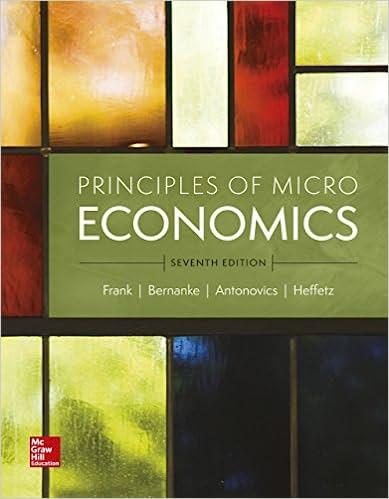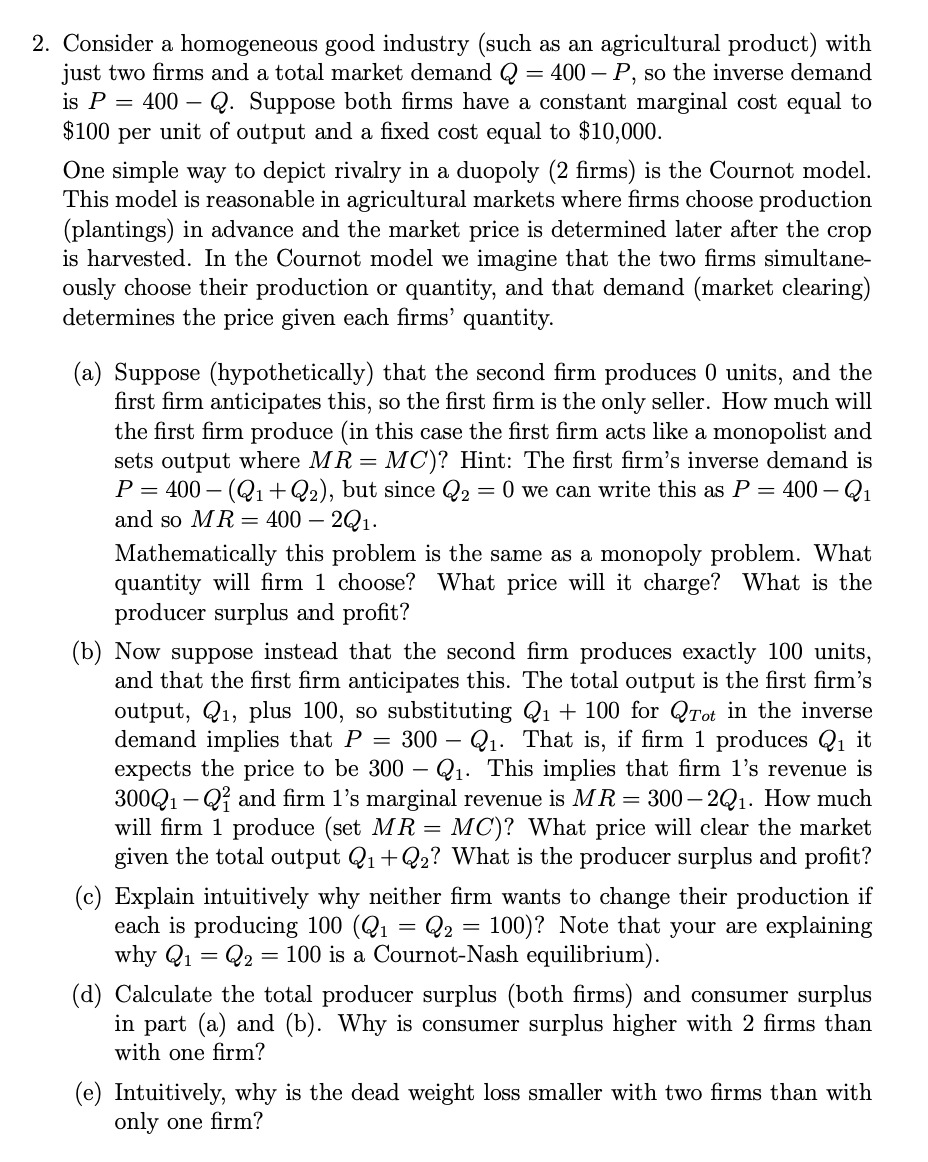
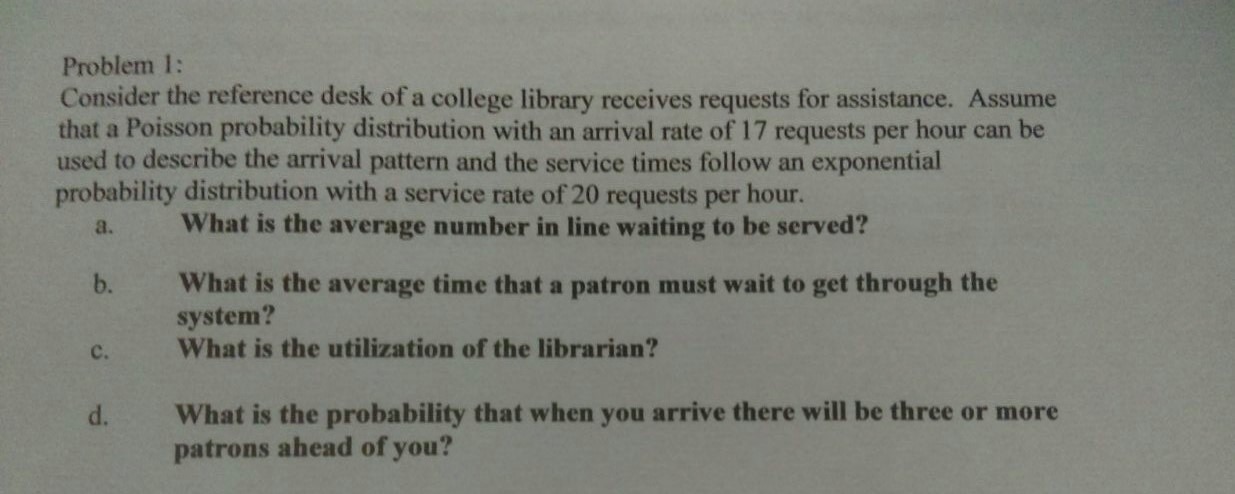
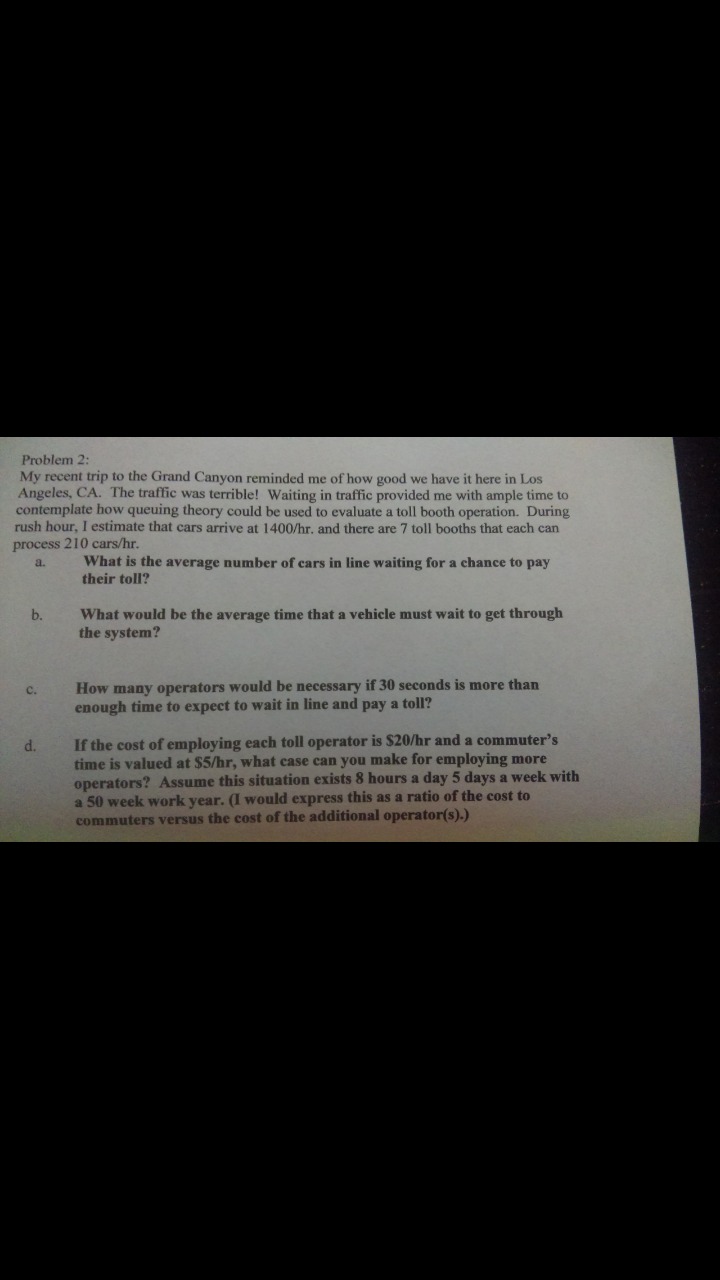
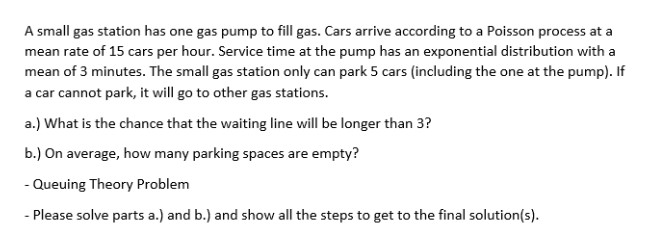
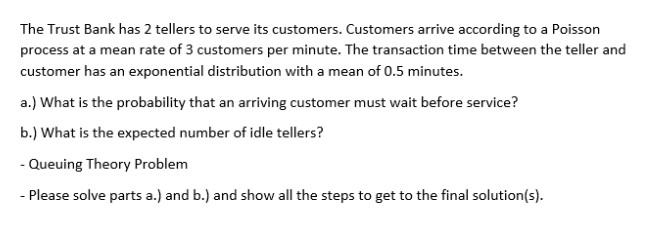

Help me kindly please...
2. Consider a homogeneous good industry (such as an agricultural product) with just two firms and a total market demand Q = 400 - P, so the inverse demand is P = 400 - Q. Suppose both firms have a constant marginal cost equal to $100 per unit of output and a fixed cost equal to $10,000. One simple way to depict rivalry in a duopoly (2 firms) is the Cournot model. This model is reasonable in agricultural markets where firms choose production (plantings) in advance and the market price is determined later after the crop is harvested. In the Cournot model we imagine that the two firms simultane- ously choose their production or quantity, and that demand (market clearing) determines the price given each firms' quantity. (a) Suppose (hypothetically) that the second firm produces 0 units, and the first firm anticipates this, so the first firm is the only seller. How much will the first firm produce (in this case the first firm acts like a monopolist and sets output where MR = MC)? Hint: The first firm's inverse demand is P = 400 - (Q1 + Q2), but since Q2 = 0 we can write this as P = 400 - Q1 and so MR = 400 - 2Q1 Mathematically this problem is the same as a monopoly problem. What quantity will firm 1 choose? What price will it charge? What is the producer surplus and profit? (b) Now suppose instead that the second firm produces exactly 100 units, and that the first firm anticipates this. The total output is the first firm's output, Q1, plus 100, so substituting Q1 + 100 for Qrot in the inverse demand implies that P = 300 - Q1. That is, if firm 1 produces Q1 it expects the price to be 300 - Q1. This implies that firm 1's revenue is 300Q1 -Q; and firm 1's marginal revenue is MR = 300-201. How much will firm 1 produce (set MR = MC)? What price will clear the market given the total output Q1+ @2? What is the producer surplus and profit? (c) Explain intuitively why neither firm wants to change their production if each is producing 100 (Q1 = Q2 = 100)? Note that your are explaining why Q1 = Q2 = 100 is a Cournot-Nash equilibrium). (d) Calculate the total producer surplus (both firms) and consumer surplus in part (a) and (b). Why is consumer surplus higher with 2 firms than with one firm? (e) Intuitively, why is the dead weight loss smaller with two firms than with only one firm?Problem 1: Consider the reference desk of a college library receives requests for assistance. Assume that a Poisson probability distribution with an arrival rate of 17 requests per hour can be used to describe the arrival pattern and the service times follow an exponential probability distribution with a service rate of 20 requests per hour. a. What is the average number in line waiting to be served? b. What is the average time that a patron must wait to get through the system? C. What is the utilization of the librarian? d. What is the probability that when you arrive there will be three or more patrons ahead of you?Problem 2: My recent trip to the Grand Canyon reminded me of how good we have it here in Los Angeles, CA. The traffic was terrible! Waiting in traffic provided me with ample time to contemplate how queuing theory could be used to evaluate a toll booth operation. During rush hour, I estimate that cars arrive at 1400/hr. and there are 7 toll booths that each can process 210 cars/hr. a. What is the average number of cars in line waiting for a chance to pay their toll? b. What would be the average time that a vehicle must wait to get through the system? C. How many operators would be necessary if 30 seconds is more than enough time to expect to wait in line and pay a toll? d. If the cost of employing each toll operator is $20/hr and a commuter's time is valued at $5/hr, what case can you make for employing more operators? Assume this situation exists 8 hours a day 5 days a week with a 50 week work year. (I would express this as a ratio of the cost to commuters versus the cost of the additional operator(s).)A small gas station has one gas pump to fill gas. Cars arrive according to a Poisson process at a mean rate of 15 cars per hour. Service time at the pump has an exponential distribution with a mean of 3 minutes. The small gas station only can park 5 cars (including the one at the pump). If a car cannot park, it will go to other gas stations. a.) What is the chance that the waiting line will be longer than 3? b.) On average, how many parking spaces are empty? - Queuing Theory Problem - Please solve parts a.) and b.) and show all the steps to get to the final solution(s).The Trust Bank has 2 tellers to serve its customers. Customers arrive according to a Poisson process at a mean rate of 3 customers per minute. The transaction time between the teller and customer has an exponential distribution with a mean of 0.5 minutes. a.) What is the probability that an arriving customer must wait before service? b.) What is the expected number of idle tellers? - Queuing Theory Problem - Please solve parts a.) and b.) and show all the steps to get to the final solution(s).Solve the following queueing theory problems. Submit your complete solutions Zoshi is a PhD student at University of'w'isconsin Madison. He does odd jobs to supplement his income. Job requests come every 5 days on the average, but the time between requests is exponential. The time for completing a job is also exponential with mean 4 days. {a} What is the probability that Yoshi will be out of jobs? {b} If Yoshi gets about 55G a job, what is his average monthly income? {c} If at the end of the semester, Yoshi decides to subcontract on the outstanding jobs at $40 each. How much, on the average, should he expect to pay


















